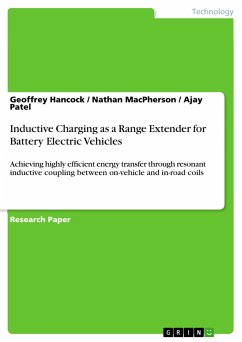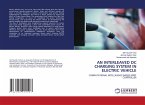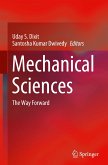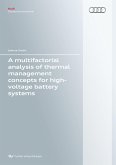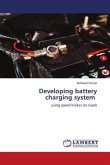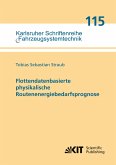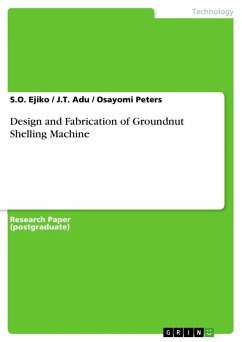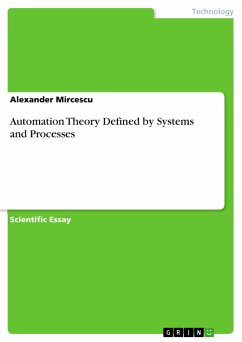Research Paper (postgraduate) from the year 2010 in the subject Engineering - Automotive Engineering, University of Michigan (Department of Mechanical Engineering), course: Energy Generation and Storage Using Modern Materials, language: English, abstract: Our goal is to design a range extending inductive charging system for vehicles driving on a highway. We will determine the relation between rate of charge for a certain design and the parameters related to operation including vehicle speed and gap distance between the charging system mounted on the vehicle and the road system. We will also determine the change in efficiency when those parameters are changed. We will design a system that could be applied to a Chevy Volt in order to maximize efficiency and rate of charge, with a goal of allowing the vehicle to drive for an extended range without using the range extending engine. For this we will need to determine the maximum rate at which its battery can charge (or the voltage it can handle), as well as physical dimensions. We will use the design characteristics of the induction system on the vehicle to design the inductive charging strips on the highway. For a range extending inductive charging system, we will create a "Range Advisor" algorithm that will allow the driver to know how far he can go while charging or how often and how long he needs to be driving on the charging strip to maintain charge, or arrive at the highway exit with a desired state of charge. With our system designed we will apply the Range Advisor to a hypothetical duty cycle of an airport taxi, operating between the Ann Arbor (A2) area and the Detroit Metro Airport (DTW). Adoption of electric vehicles has been hindered by the range anxiety due to relatively low energy density of current battery technology, and relatively long charge times. Current vehicles have supplemented electric capabilities by including a range extending internal combustion engine that allows for extra range when the level of charge of the battery is low. In order to maintain all-electric capability and achieve longer ranges, without improving battery capacity, a range extending charging system is needed. Inductive charging can be implemented for use while driving, so that the vehicle can be charged while it is moving. Resonant inductive coupling is a promising method for this application. Resonant inductive power transfer has been demonstrated to perform better than conventional inductive coupling, with larger gaps between source and receiving coils. This method has been demonstrated at high efficiency, 50% or more, at distances at least equal to the diameter of the source coil.
Hinweis: Dieser Artikel kann nur an eine deutsche Lieferadresse ausgeliefert werden.
Hinweis: Dieser Artikel kann nur an eine deutsche Lieferadresse ausgeliefert werden.

